Education
Gallery Guide
Speaking Volumes: Transforming Hate showcases the diverse work of more than thirty artists who have transformed thousands of hateful white supremacist books into uplifting works of art. This stunning exhibition challenges and moves visitors with its thought provoking and occasionally light-hearted collection of artwork, and provides honest opportunities to address discrimination in our communities and racism in American.
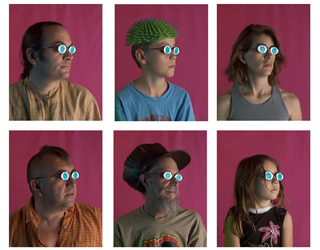
Discrimination
We all want to feel included and accepted for who we are. When a person or a group is treated differently, negatively, or unfairly without any real reason – especially on the grounds of race, religion, age, gender, sexual orientation, or disability – that is discrimination.
Blue Eyes, Brown Eyes by Smith and Ambrose-Smith explores discrimination. The day after Martin Luther King, Jr. was assassinated in 1968, Iowa schoolteacher Jane Elliott gave her third-grade students a first- hand experience in the meaning of discrimination. Ms. Elliott devised the controversial and startling “Blue Eyes, Brown Eyes” exercise. This now-famous exercise labels participants as inferior or superior based solely upon the color of their eyes and exposes them to the experience of being treated as less valuable and less intelligent.
• What are some forms of discrimination?
• Have you ever been treated differently?
• How did you feel?
• What can you do to help prevent others from being treated unfairly?
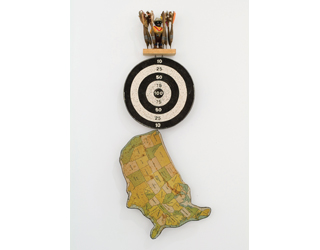
Stereotypes
A stereotype is a category, or a group, in which we place people. Our brains categorize things automatically all the time; we see someone and put that person into a group — for example, old or young, or boy or girl. This is not inherently bad, but can be harmful when we assume that everyone in a group is the same. Stereotyping can lead to bullying, and can cause the victims of those stereotypes to be driven by fear. It is a losing situation for both those who are doing the stereotyping and those who are victims.
In Nick Cave’s work, Profiling, he examines stereotypes of race and the negative effects it has on our society.
• How do people learn to stereotype others? How might they unlearn that?
• How can the media (newspapers, television, social media, movies) help reduce stereotyping?
• What can you do to help reduce stereotyping?
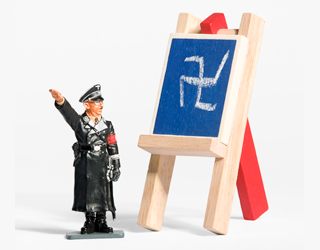
Symbolism
A symbol is an object or picture that represents something else. Symbols are everywhere in modern society — from emojis and advertising to religious symbols and road signs — these markings provide us with context, direction, and meaning. The swastika is an ancient symbol that has had many different meanings over time. From its earliest usage, the symbol of the swastika was perceived as positive and encouraging of life, but was appropriated in 1920 as a German national symbol by the National Socialist Party, or Nazi Party. Since World War II, the swastika has become stigmatized as a symbol of hatred and racial bias.
• Do you think the swastika could ever be considered a positive symbol once again? Why or why not?
• How do symbols impact our daily lives?
• What other symbols can you find in the exhibition?
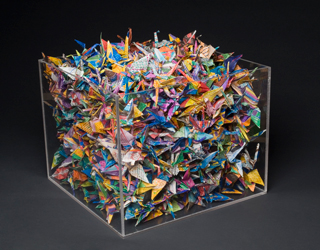
Transformation
A transformation takes place when the former appearance of an object or idea is changed. In A Thousand Cranes by Students and Faculty, Sara Steele worked with the students, teachers, and principal from C.W. Henry K-8 School in Philadelphia to transform the negative books into something beautiful and positive. They recycled the hate books into 1,000 origami cranes. In Japan, cranes are a symbol for peace. The idea for this collaboration came from the book Sadako and the Thousand Paper Cranes by Eleanor Coerr and the Japanese legend that if one folds 1,000 paper cranes one’s wish will come true.
• What do you think the students wished for when they made this project?
• What other artworks in this exhibition use the idea of transformation?
• What can you do to transform something negative into something positive?
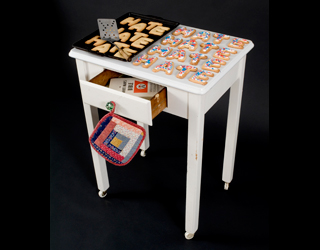
Values
Values are beliefs or ideals that one holds important. They have a major influence on a person’s behavior and attitude and serve as broad guidelines in all situations. Both positive and negative values can be passed on from one family member to the next.
In The Cooling Table by Miguel Guillen, the artist is representing how the idea of hate is subtly passed from generation to generation. Sometimes, without even realizing it, we inherit the values of our family or community without recognizing the negative beliefs they can reinforce.
• What is something you strongly believe?
• How did you learn this idea?
• What can you do to influence the positive values and beliefs of others?
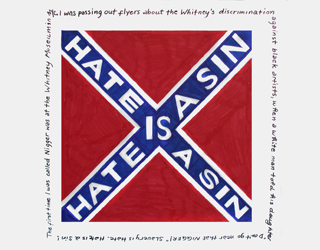
MLK Quote
Returning violence for violence multiplies violence, adding deeper darkness to a night already devoid of stars.
Darkness cannot drive out darkness: only light can do that. Hate cannot drive out hate: only love can do that.
— REV. DR. MARTIN LUTHER KING, JR. Strength to Love, 1963
The curator of the exhibition, Speaking Volumes: Transforming Hate, illuminates the thought-provoking project that has toured the USA since it was first created by the Holter Museum of Art in 2008. Katie Knight presented this slide-talk at the Holter Museum in 2018 at the eleventh anniversary exhibition. Knight shares images of the art along with stories from the artists, expressing their diverse strategies for transforming hate — urgent work in our troubled times.
Goal of the Speaking Volumes: Transforming Hate Exhibition Education Program:
Use art as a creative process to inspire participants to work for social justice.
Objectives:
- Engage in activities and discussion to better understand how white supremacy is used to justify institutional oppression. Develop insight into how attitudes of bigotry are tied to oppressive systems.
- Gain understanding of the impact of institutional oppression on targeted groups: people of color, women, LGBTQ, different religions, people with disabilities.
- Learn about and advocate for policies that would create a more just society.
This education page is currently under construction. Check back or contact us for more activities, lesson plans, and resources.
Some of these learning activities make use of pages from the white supremacist books. We do not encourage you to purchase these books. We can share scanned pages to use for educational activities. Contact Katie Knight at curator@speakingvolumes.net.
